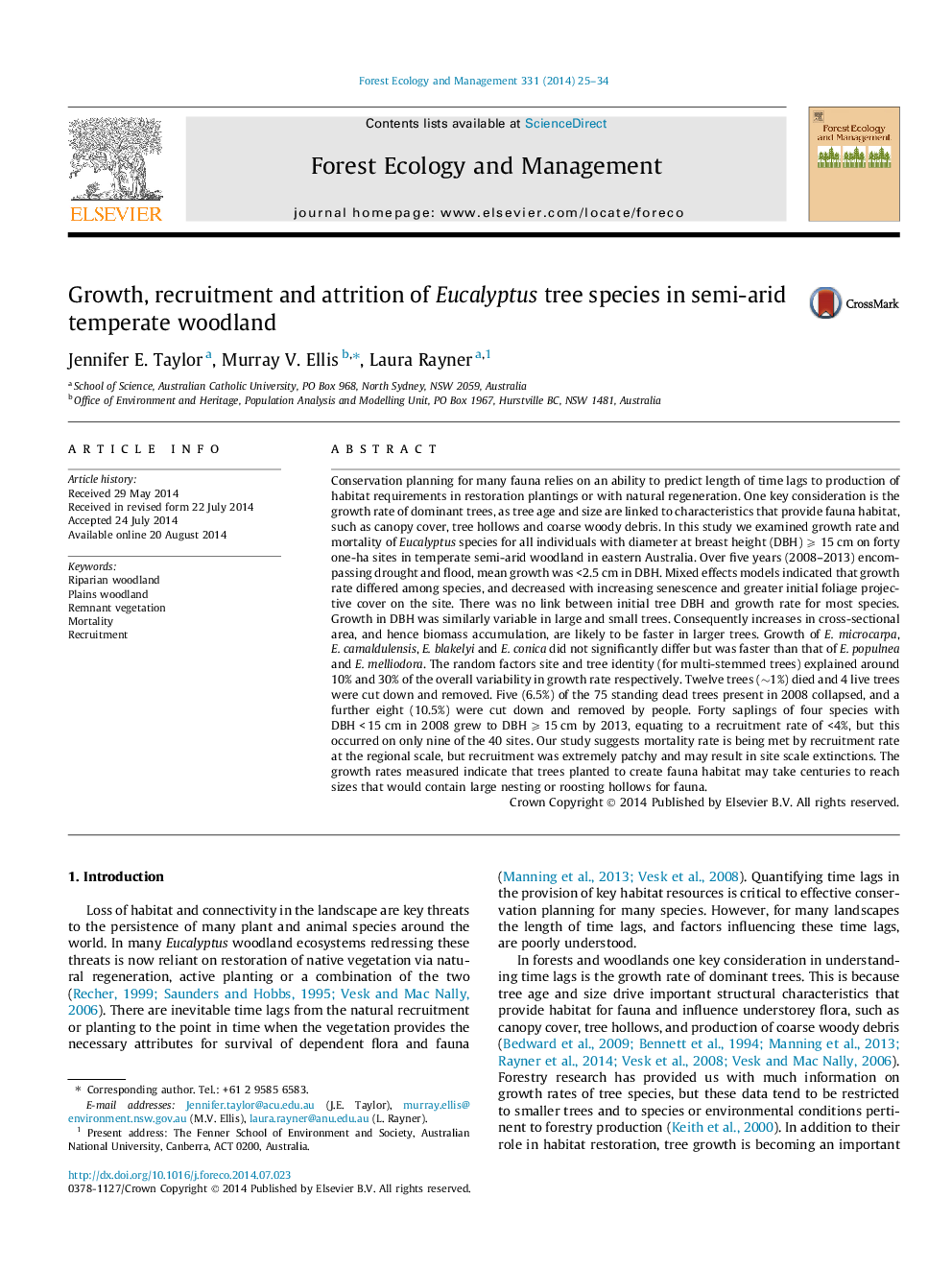| کد مقاله | کد نشریه | سال انتشار | مقاله انگلیسی | نسخه تمام متن |
|---|---|---|---|---|
| 86438 | 159189 | 2014 | 10 صفحه PDF | دانلود رایگان |
• We measured growth over 5 years in 6 species of Eucalyptus in semi-arid woodland.
• Growth differed among species and large tree grew as fast as small trees.
• Growth decreased with increasing foliage projective cover on the site.
• 1% of trees died naturally but similar losses occurred due to humans.
• Patchy recruitment at a rate <4% occurred on <23% of sites.
Conservation planning for many fauna relies on an ability to predict length of time lags to production of habitat requirements in restoration plantings or with natural regeneration. One key consideration is the growth rate of dominant trees, as tree age and size are linked to characteristics that provide fauna habitat, such as canopy cover, tree hollows and coarse woody debris. In this study we examined growth rate and mortality of Eucalyptus species for all individuals with diameter at breast height (DBH) ⩾ 15 cm on forty one-ha sites in temperate semi-arid woodland in eastern Australia. Over five years (2008–2013) encompassing drought and flood, mean growth was <2.5 cm in DBH. Mixed effects models indicated that growth rate differed among species, and decreased with increasing senescence and greater initial foliage projective cover on the site. There was no link between initial tree DBH and growth rate for most species. Growth in DBH was similarly variable in large and small trees. Consequently increases in cross-sectional area, and hence biomass accumulation, are likely to be faster in larger trees. Growth of E. microcarpa, E. camaldulensis, E. blakelyi and E. conica did not significantly differ but was faster than that of E. populnea and E. melliodora. The random factors site and tree identity (for multi-stemmed trees) explained around 10% and 30% of the overall variability in growth rate respectively. Twelve trees (∼1%) died and 4 live trees were cut down and removed. Five (6.5%) of the 75 standing dead trees present in 2008 collapsed, and a further eight (10.5%) were cut down and removed by people. Forty saplings of four species with DBH < 15 cm in 2008 grew to DBH ⩾ 15 cm by 2013, equating to a recruitment rate of <4%, but this occurred on only nine of the 40 sites. Our study suggests mortality rate is being met by recruitment rate at the regional scale, but recruitment was extremely patchy and may result in site scale extinctions. The growth rates measured indicate that trees planted to create fauna habitat may take centuries to reach sizes that would contain large nesting or roosting hollows for fauna.
Journal: Forest Ecology and Management - Volume 331, 1 November 2014, Pages 25–34
